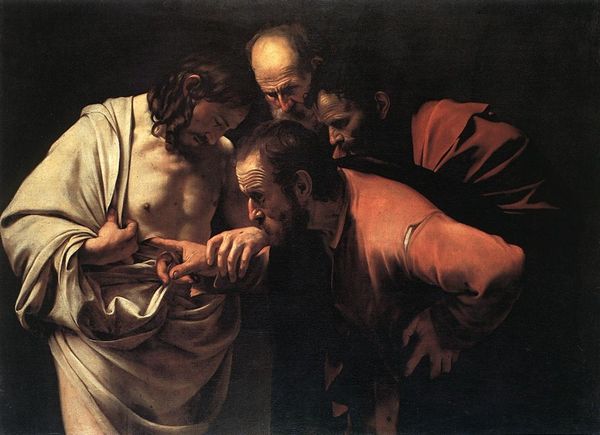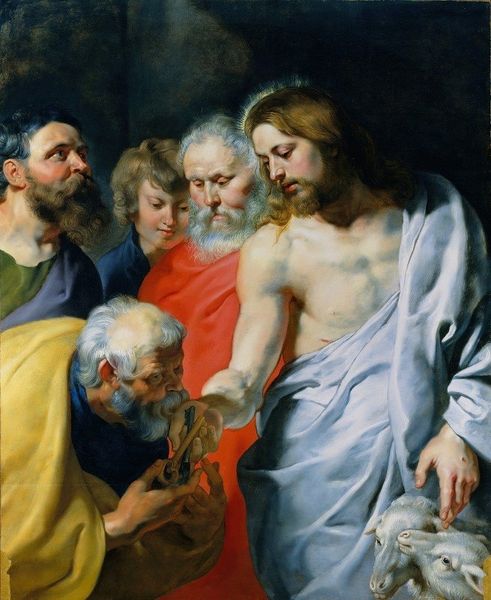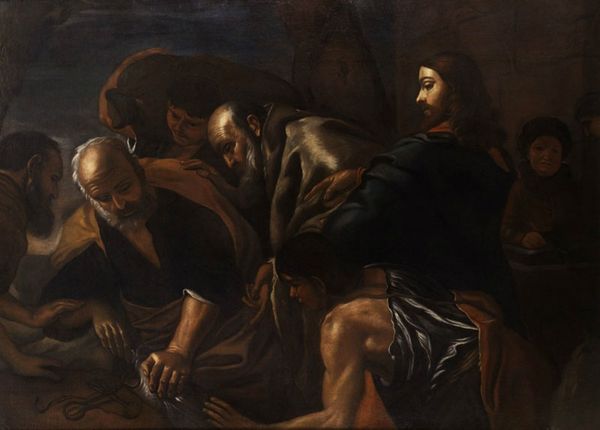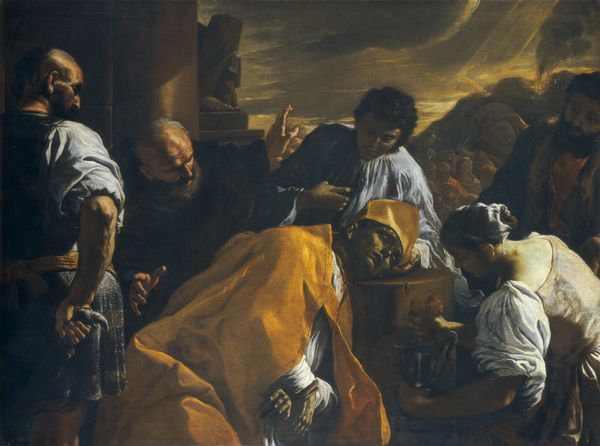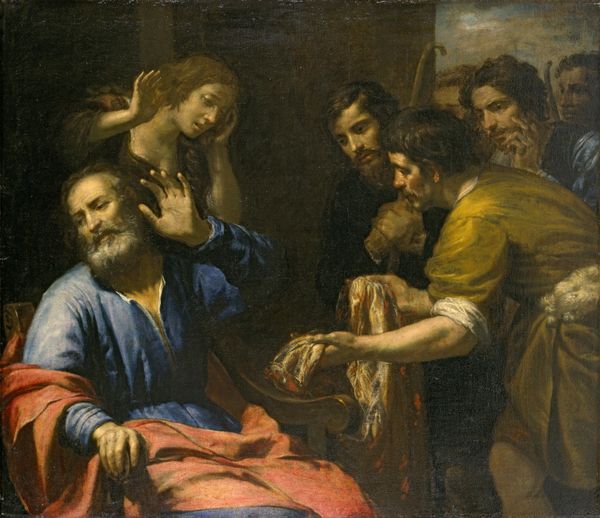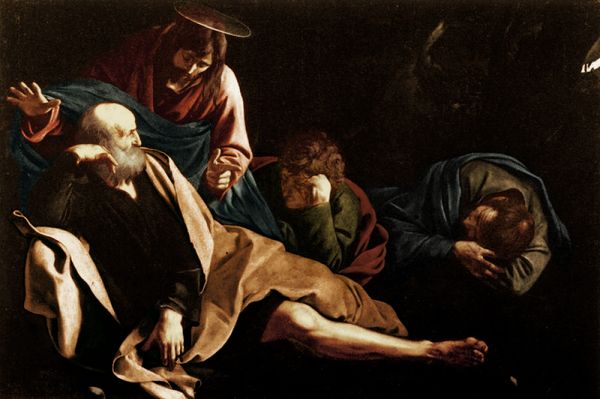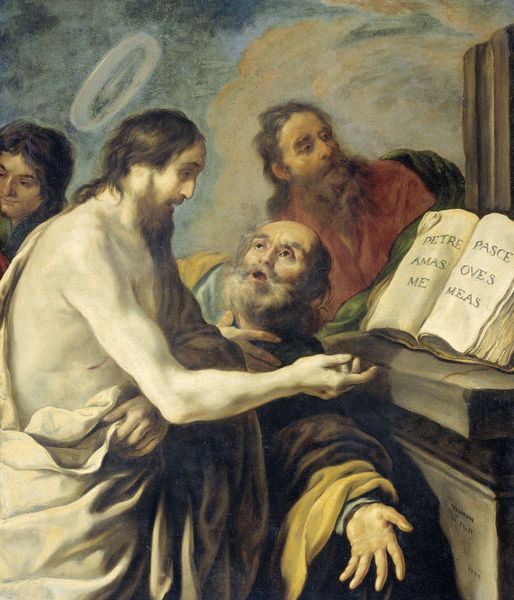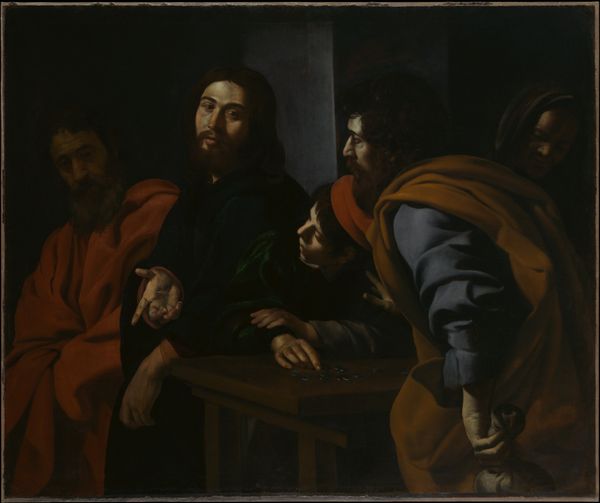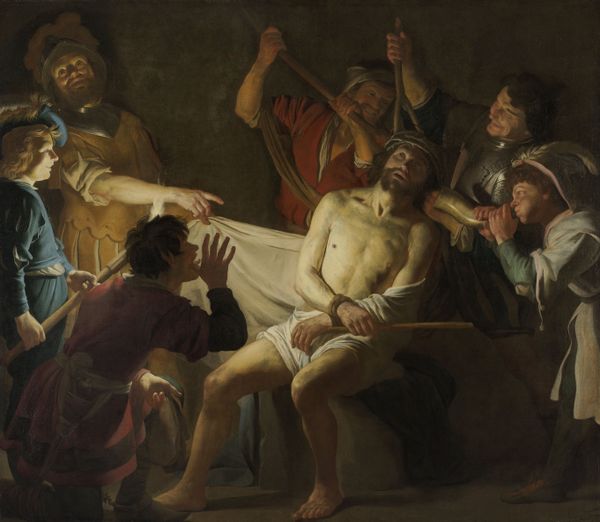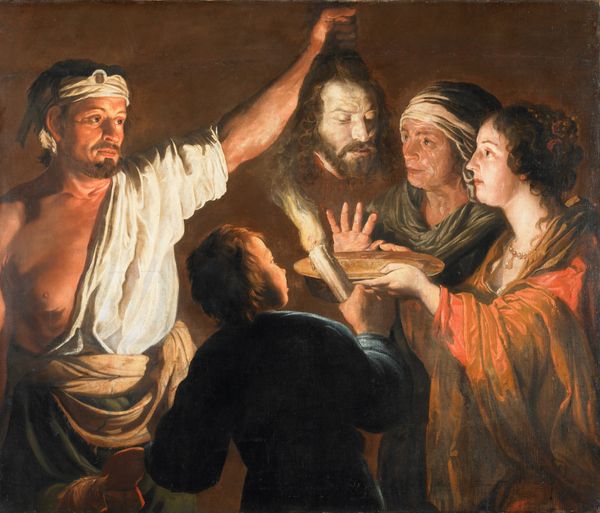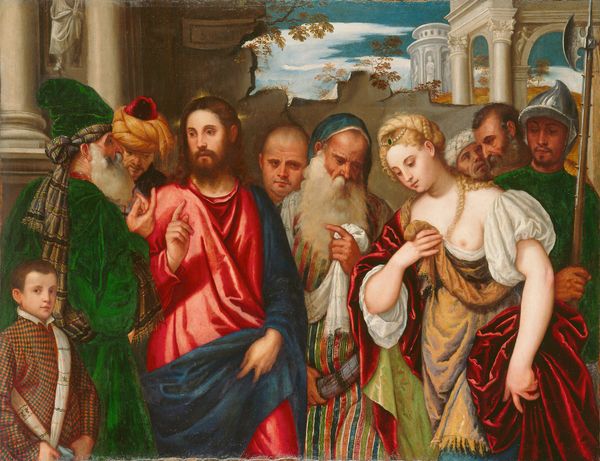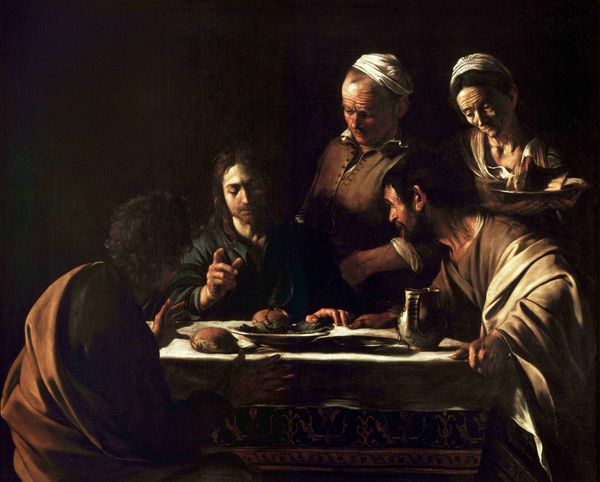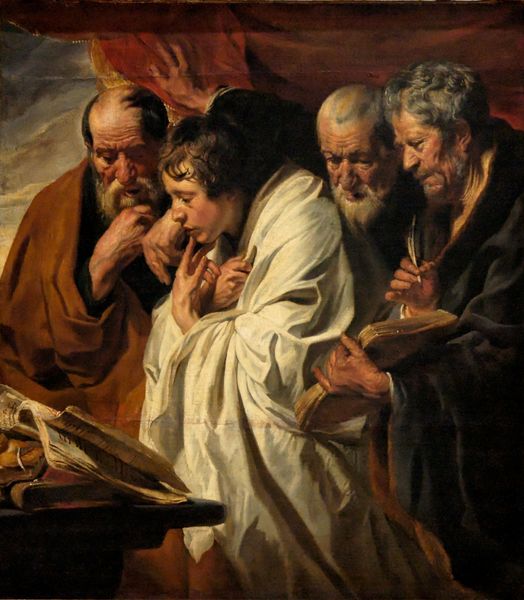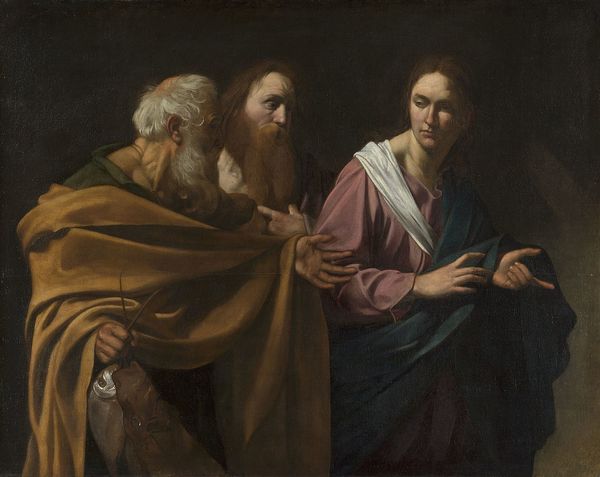
painting
#
baroque
#
painting
#
figuration
#
history-painting
Dimensions: support height 108.8 cm, support width 136.5 cm
Copyright: Rijks Museum: Open Domain
Hendrick ter Brugghen painted ‘The Incredulity of Thomas’ on canvas sometime in the early 17th century. Brugghen was part of a group of Dutch painters influenced by the Italian Baroque master Caravaggio. The painting depicts a biblical scene where the Apostle Thomas doubts Jesus' resurrection, demanding to touch his wounds before believing. Brugghen’s rendition, with its stark realism and dramatic lighting, invites viewers to question the nature of belief and evidence. Made in the Dutch Republic, a Protestant society that valued empirical observation, the painting reflects a cultural emphasis on tangible proof. Simultaneously, it challenges the established iconography of Catholic art, where faith was often portrayed as unquestioning acceptance. By presenting Thomas's skepticism, Brugghen subtly critiques the power structures within religious institutions, inviting a more personal and critical engagement with faith. Art historians consult theological texts and social histories to understand the painting's complex cultural and political implications.
Comments
rijksmuseum about 2 years ago
⋮
Thomas simply could not believe that Christ had actually risen from the dead. His doubts were dispelled only when he had seen and touched the wounds in Christ’s side and hands himself. Emulating his great model Caravaggio, Ter Brugghen portrayed Christ and his followers with craggy faces and wrinkled, rough hands.
Join the conversation
Join millions of artists and users on Artera today and experience the ultimate creative platform.
